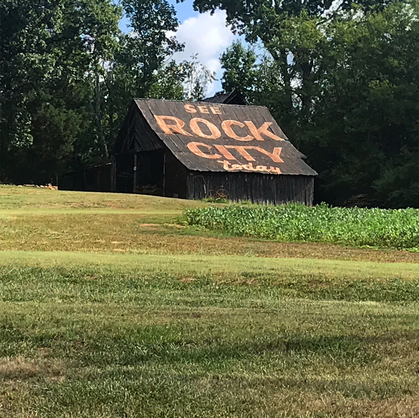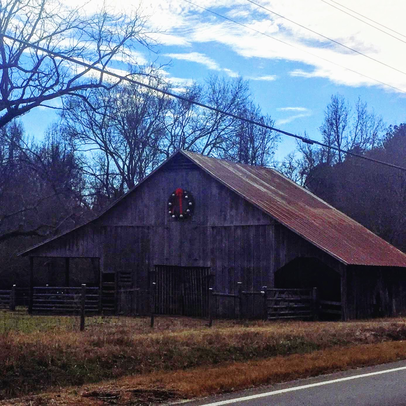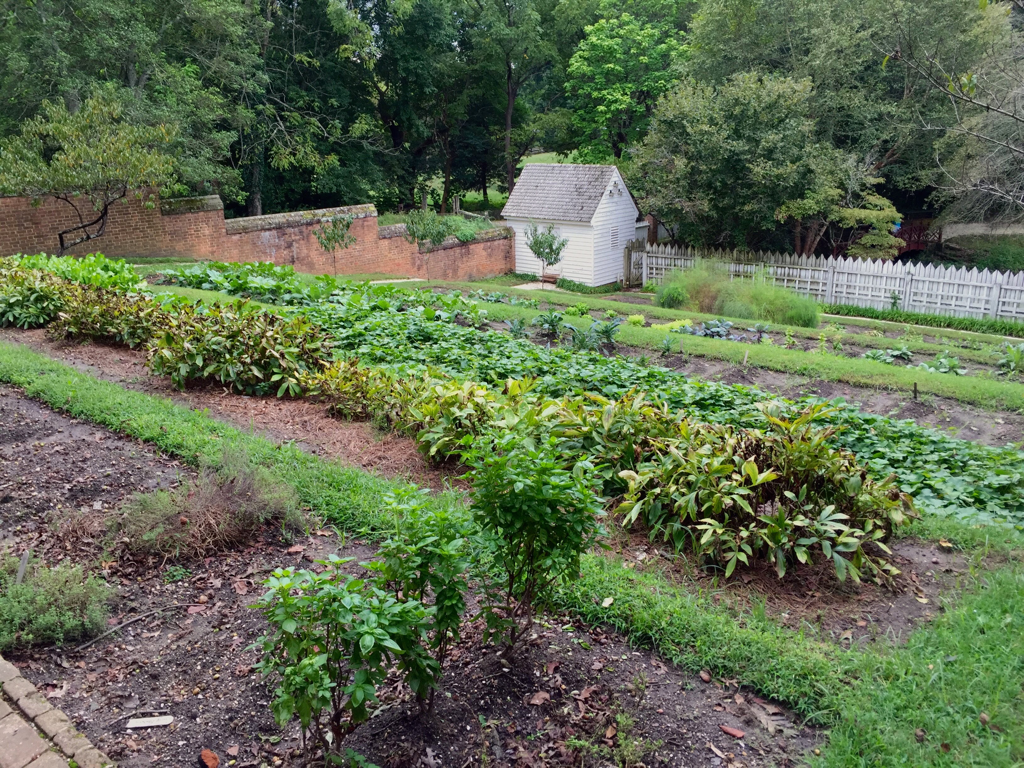 One of 79 Surviving Rock City Barns One of 79 Surviving Rock City Barns Sam Burnham, Curator A weathered old barn sits across a field. The structure is easily visible from the highway. Despite the impact from decades of soaking rain and blistering sun, “See Rock City Today” is still visible on the tin roof. The locals pass by with hardly a thought of it. To them it’s just part of the landscape that is home, no different than anything else along a barely changing roadside. But this scene is becoming more rare. In places where shopping centers and subdivisions have replaced family farms this scene seems either idyllic or obsolete. It all depends on who you ask. For those embracing the idea that progress means development the field and barn offer opportunity, potential, and an open door to the future. Land has a monetary value and the right plans can maximize the return on investment. The numbers shift with considerations for commercial, industrial, or residential development. Under the right circumstances a landowner could become a multimillionaire overnight. That’s a hard offer to pass up in exchange for an old farmhouse, a weathered barn, and some odd acres of dirt. That’s how developments like Gwinnett Place and Town Center forever changed the culture of their respective communities. Skyrocketing real estate prices and encroaching development caused small homesteads and farms to fall like dominoes. The land became much more economically productive. Thousands of jobs were created in shopping centers and freestanding stores, restaurants, and bars. A single family home or a stand of trees would be foolish on such valuable land. There’s a lesson there on the power of markets but that’s for another day.  A Festive Take on the Barn Aesthetic A Festive Take on the Barn Aesthetic Back at the barn we have that hint of nostalgia. Oh to return to a time when barns were plentiful! But the barn wasn’t built for aesthetics. It had a purpose. Perhaps it still serves its purpose. Barns house livestock, feed, equipment...it all depends on the farmer, the farm, and the barn. Such a versatile structure added some more income when Garnet Carter paid for advertising space on it and Clark Byers covered them in messages. The ad campaign combined with a love of the past and fond memories make these particular barns more than ordinary. Really, any old wooden barn will bring those emotions. The Rock City (or Ruby Falls, Sequoyah Caverns, etc) barns seem to carry an extra punch. The imagery broadcasts to our emotions. We think of human scale, simpler times, dirty hands, clean money, rugged individualism, self-sufficiency. Those are the qualities that built the aesthetic. We see a surviving barn and we think of it as loyal, reliable, industrious, thrifty - all good characteristics. They are the traits we hope to see in ourselves. But are we really looking for those traits? Has the aesthetic become so strong that it’s enough to admire the barn without expecting to live up to the traits themselves? I’m asking these questions as on a clipboard rather than a chalkboard. I ask as a learner rather than a teacher. Over the past few months I’ve asked myself many of these questions. 2020 has given perspective. I want to grow from that. It’s a chance to build an aesthetic like the barns have. If we really believe in the principles, embracing them fully should be a natural reaction. What drives the aesthetic? How do we get there ourselves? Will this help us preserve the people, places, things, and ideas that we love?
0 Comments
Leave a Reply. |
Sam B.Historian, self-proclaimed gentleman, agrarian-at-heart, & curator extraordinaire Social MediaCategories
All
Archives
November 2022
|





 RSS Feed
RSS Feed
